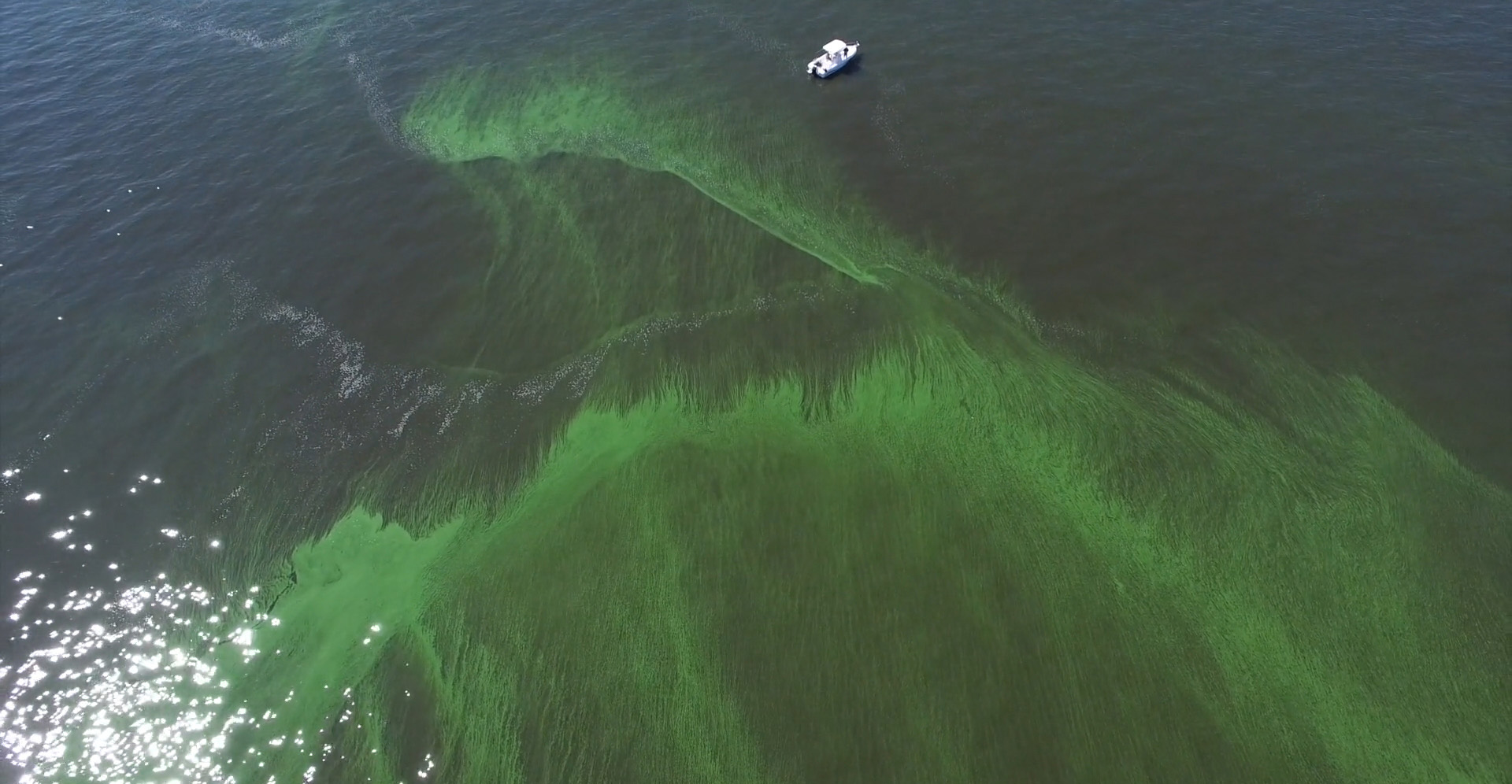
New NCCOS-funded research shows that microbes in the water column may not play a primary role in the break down of microcystins, the toxins produced by cyanobacteria blooms in Lake Erie. The published results challenge the traditional explanation for microcystin removal and raise questions about how and where microcystin degradation occurs.
Microcystins are potent liver-damaging toxins frequently detected in freshwater lakes plagued by cyanobacteria (blue-green algae). With the prevalence and severity of harmful cyanobacteria blooms on the rise around the world, natural resource managers need to understand the fate of the toxins produced by these blooms.
Microbial biodegradation has traditionally been referred to as the most important biotic avenue for removal of microcystin from aquatic environments. However, the researchers did not detect microcystin-degrading gene pathways in freshwater lake samples collected for the study and known to contain microcystins, suggesting that other pathways for microcystin biodegradation in the water column are more active during blooms or that microcystin removal is occurring elsewhere (e.g., bottom sediments). The finding might also indicate that microcystin biodegradation was not occurring, which, if true, highlights the crucial need for accurate detection methods and appropriate water treatments, since biodegradation may not be the key mechanism removing microcystins as previously thought.
The research was sponsored by the NCCOS Prevention, Control, and Mitigation of Harmful Algal Blooms (PCMHAB) Program.
Citation: Krausfeldt, Lauren E., Morgan M. Steffen, Robert M. McKay, George S. Bullerjahn, Gregory L. Boyer, and Steven W. Wilhelm. 2019. Insight Into the Molecular Mechanisms for Microcystin Biodegradation in Lake Erie and Lake Taihu. Frontiers in Microbiology, 10 December 2019. https://doi.org/10.3389/fmicb.2019.02741
